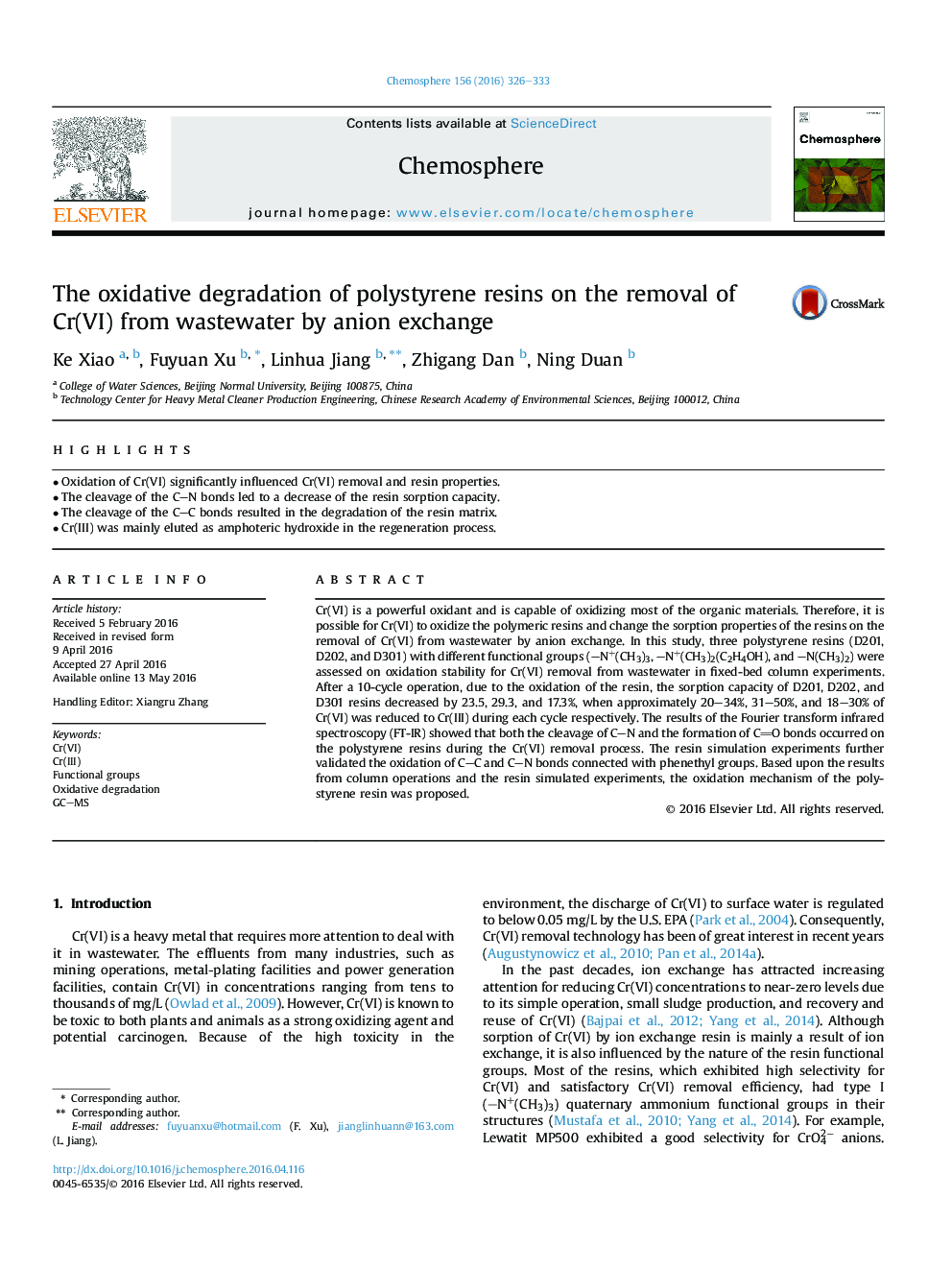| Article ID | Journal | Published Year | Pages | File Type |
|---|---|---|---|---|
| 4407710 | Chemosphere | 2016 | 8 Pages |
•Oxidation of Cr(VI) significantly influenced Cr(VI) removal and resin properties.•The cleavage of the CN bonds led to a decrease of the resin sorption capacity.•The cleavage of the CC bonds resulted in the degradation of the resin matrix.•Cr(III) was mainly eluted as amphoteric hydroxide in the regeneration process.
Cr(VI) is a powerful oxidant and is capable of oxidizing most of the organic materials. Therefore, it is possible for Cr(VI) to oxidize the polymeric resins and change the sorption properties of the resins on the removal of Cr(VI) from wastewater by anion exchange. In this study, three polystyrene resins (D201, D202, and D301) with different functional groups (–N+(CH3)3, –N+(CH3)2(C2H4OH), and N(CH3)2) were assessed on oxidation stability for Cr(VI) removal from wastewater in fixed-bed column experiments. After a 10-cycle operation, due to the oxidation of the resin, the sorption capacity of D201, D202, and D301 resins decreased by 23.5, 29.3, and 17.3%, when approximately 20–34%, 31–50%, and 18–30% of Cr(VI) was reduced to Cr(III) during each cycle respectively. The results of the Fourier transform infrared spectroscopy (FT-IR) showed that both the cleavage of CN and the formation of CO bonds occurred on the polystyrene resins during the Cr(VI) removal process. The resin simulation experiments further validated the oxidation of CC and CN bonds connected with phenethyl groups. Based upon the results from column operations and the resin simulated experiments, the oxidation mechanism of the polystyrene resin was proposed.
